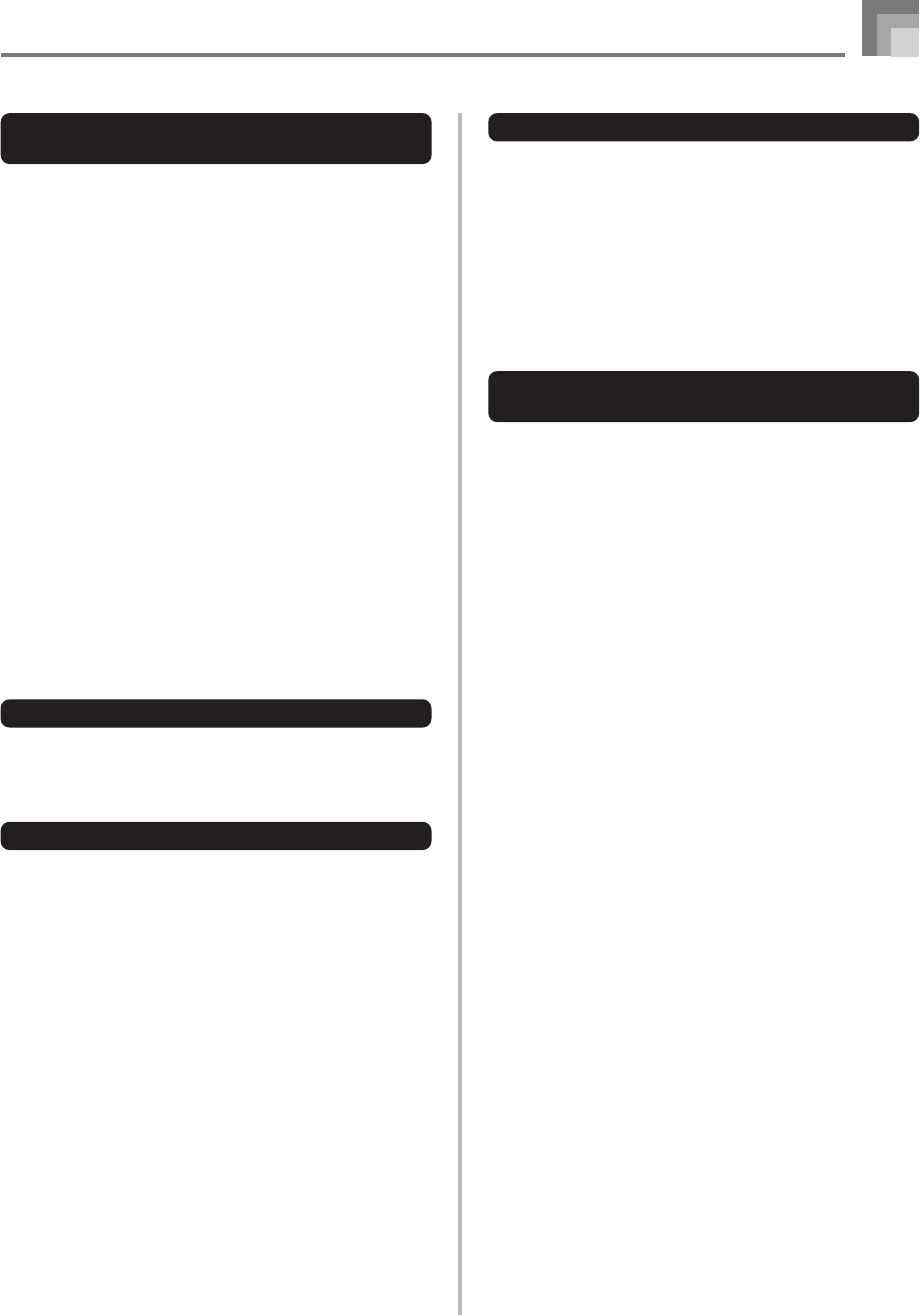
E-55
Song Memory Function
Track 1 Contents After Real-time
Recording
In addition to keyboard notes and accompaniment chords,
the following data is also recorded to Track 1 during real-
time recording. This data is applied whenever Track 1 is
played back.
• Tone number
• Rhythm number
• INTRO/ENDING 1 button, INTRO/ENDING 2 button,
VARIATION/FILL-IN 1 button, VARIATION/FILL-IN 2
button, SYNCRHO/FILL-IN NEXT button operations
• Pedal operations (option)
The following data is recorded in the header whenever you
start a recording of a track.
• Mixer settings of other tracks
• Effect type
• Accompaniment volume
• Reverb Level
• Chorus Level
• DSP Hold On/Off
• Mixer Hold On/Off
• Pitch bend wheel operation
• Modulation wheel operation (WK-3800/WK-8000)
• Modulation button operation (WK-3300)
• Pitch bend range
Mixer Mode Settings
Channel 1 Mixer parameters (page E-40) are automatically
recorded to Track 1. You can use the Mixer to change each of
the parameters.
Memory Capacity
The keyboard has memory for approximately 10,000 notes.
• The measure number and note number flash on the display
whenever remaining memory is less than 100 notes.
• Recording automatically stops (and auto-accompaniment
and rhythm stops playing if they are being used) whenever
memory becomes full.
• Initially, nothing is stored in song memory.
Memory Data Storage
• Whenever you make a new recording, anything previously
stored in memory is replaced.
• Turning off the keyboard while a record operation is in
progress causes the contents of the track your are currently
recording to be lost.
• You can save memory data to external media, if you want.
See “Saving Data” on page E-83 for more information.
• Remember that you can dump memory contents to a
computer using the procedure described under “Internet
Data Expansion System” on page E-82.
Track 1 Real-time Recording
Variations
The following describes a number of different variations you
can use when recording to Track 1 using real-time recording.
All of these variations are based upon the procedure described
under “To record with real-time recording” on page E-54.
To start recording with synchro start
In place of step 4, press the SYNCHRO/FILL-IN NEXT
button. Auto-accompaniment and recording will both start
when you play a chord on the accompaniment keyboard.
To record using an intro, ending, or fill-in
During recording, the INTRO/ENDING 1/2, SYNCHRO/
FILL-IN NEXT, and VARIATION/FILL-IN 1/2 buttons
(pages E-36 to 37) can all be used as they normally are.
To synchro start Auto Accompaniment with an intro
pattern
In place of step 4, press the SYNCHRO/FILL-IN NEXT button
and then INTRO/ENDING 1 or INTRO/ENDING 2 button.
Auto-accompaniment will start with the intro pattern when
you play a chord on the accompaniment keyboard.
To start Auto Accompaniment part way into a recording
In place of step 4, press the SYNCHRO/FILL-IN NEXT button
and then play something on the melody keyboard to start
recording without Auto Accompaniment. When you reach
the point where you want accompaniment to start, play a
chord on the accompaniment keyboard to start Auto
Accompaniment.


















